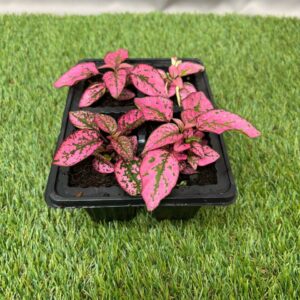Work in your Garden Safely
DIY and how-to

Work in your Garden Safely
Have you ever tackled a large gardening project with gusto over the weekend, only to wake up on Monday morning with a sore back and muscles? Gardening is a very good way to get regular muscular exercise, but if you haven’t exercised in a while, then your first attempts at planting, weeding and landscaping may leave you feeling a bit tender. Sore necks, backs, knees and muscles can happen after these spurts of activity, especially if you’re not used to using the muscles involved.
Here are some great ways to minimize that muscle pain on a Monday morning, and make sure that you take good care of your back, neck and knees.
Get Comfortable:
Before you start, find a comfortable position for your body to work in.
You can maintain this position by:
- Moving with your work
- Keeping your work in front of and close to your body so that you don’t have to reach out or twist your body unnecessarily.
- Using the right tools to make the job easier
Tips for Tools:
- Make sure the size of the gardening tool handle matches the size of your hand.
- Hold your tools in a loose comfortable grip. Holding them too tightly may lead to an injury.
- Use a wheelbarrow to transport supplies.
- Use power tools for repetitive work.
- Where relevant, use tools with a longer handle so that you don’t have to reach too far.
- Keep your digging and cutting tools sharp.
- Use knee pads or a foam pad for kneeling. If you struggle to get up after working at ground level, you can also invest in a low padded kneeling stool with handles on the side.
- Wrap any slippery handles in sports tape to improve your grip on them.
Set the Pace:
- When you feel tired, take a break.
- Spread heavy lifting and digging tasks over a longer period, rather than tackling them all on one day.
- Spread your major projects throughout the seasons of the year. Remember to take time to recover between projects. Enjoy the fruits of the task you have just completed, rather than rushing headlong into the next one.
- Alternate between tasks. Avoid repetitive strain injuries by working in different positions and by doing different activities throughout the day.
- Remember to protect yourself from the sun and to drink plenty of fluids.
Heavy duty?
It’s important to work according to your own physical strength. When lifting heavy objects, a good guideline to follow is nothing heavier than 29 Kg for men and 13 Kg for women.
However, this weight should be decreased when object being lifted is:
- Low to the ground or overhead
- Deep in a wheelbarrow or difficult to reach
- An awkward shape
- Gardening is an excellent form of exercise, as it helps improve your flexibility, muscle strength, endurance and range of motion. The time spent outdoors also promotes your general health and wellbeing. You can maximize your health benefits by doing a quick warm up and a few stretches before you start gardening.
- March on the spot until you feel warm, and then do a few basic stretches. Repeat the stretches again once you have finished gardening.
Tips for Stretching:
- When stretching, remember to keep your movements slow and controlled.
- You should feel a gentle stretch in the muscle – stretching should never be painful.
- Once you feel a stretch, hold the position for 10-15 seconds. Keep your muscle still, and do not jerk.
- Repeat each stretch 2 to 3 times.
Two good stretches to try:
- Wrist Flexors – Extend your arm out in front of you with your hand in an upright position. Use your other hand to pull (towards you) on the palm of the arm that is extended. Straighten your elbow. Repeat with the other arm.
- Wrist Extensors – Extend your arm out in front of you with your hand pointing to the ground. Use your other hand to pull (towards you) on the hand that is pointing downwards. Straighten your elbow. Repeat with the other arm
You might also like
Shop online
-
- Sale!
MINI ADULT 2KG
- Original price was: R348.99.R279.19Current price is: R279.19.
- Add to cart Learn More




